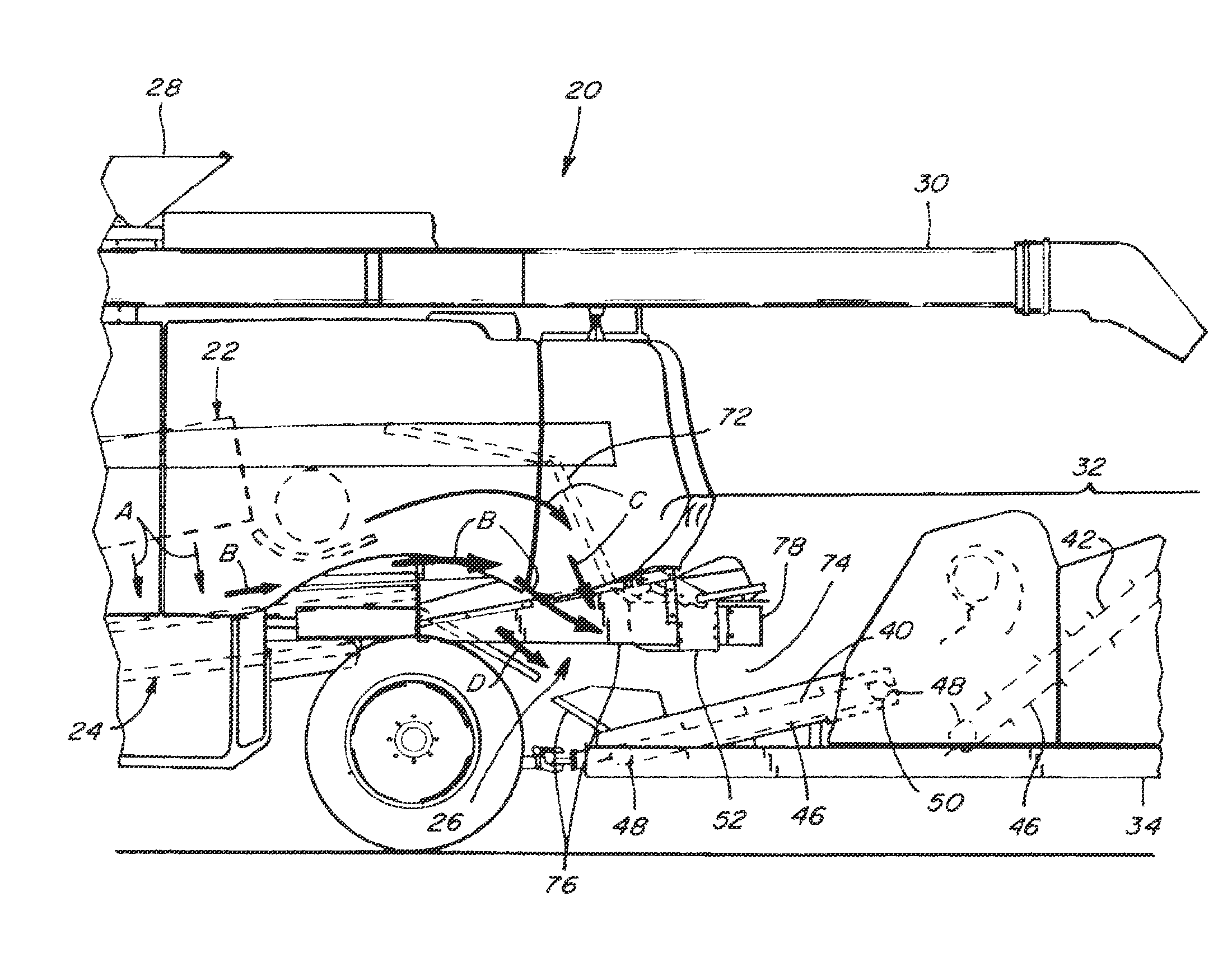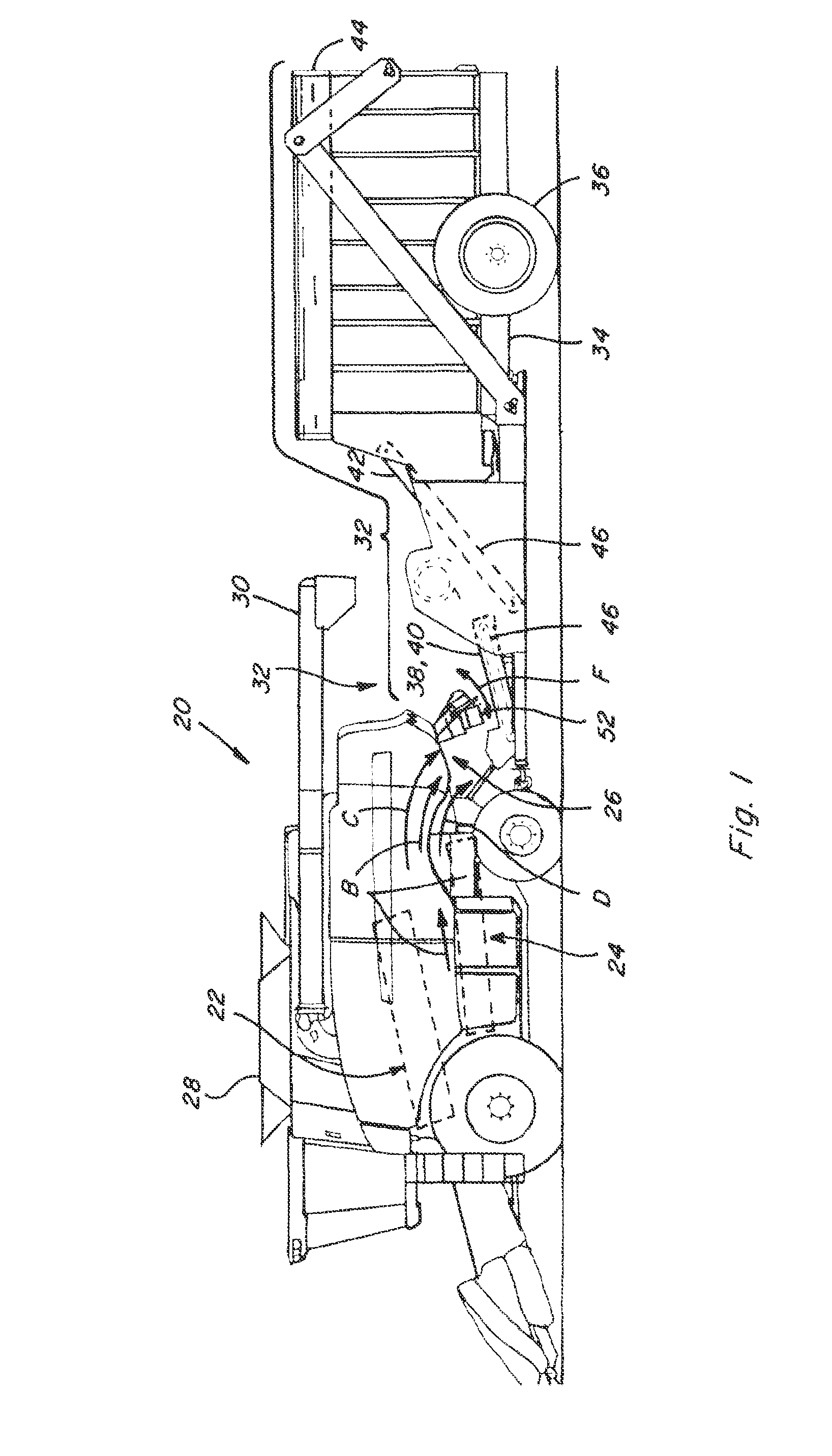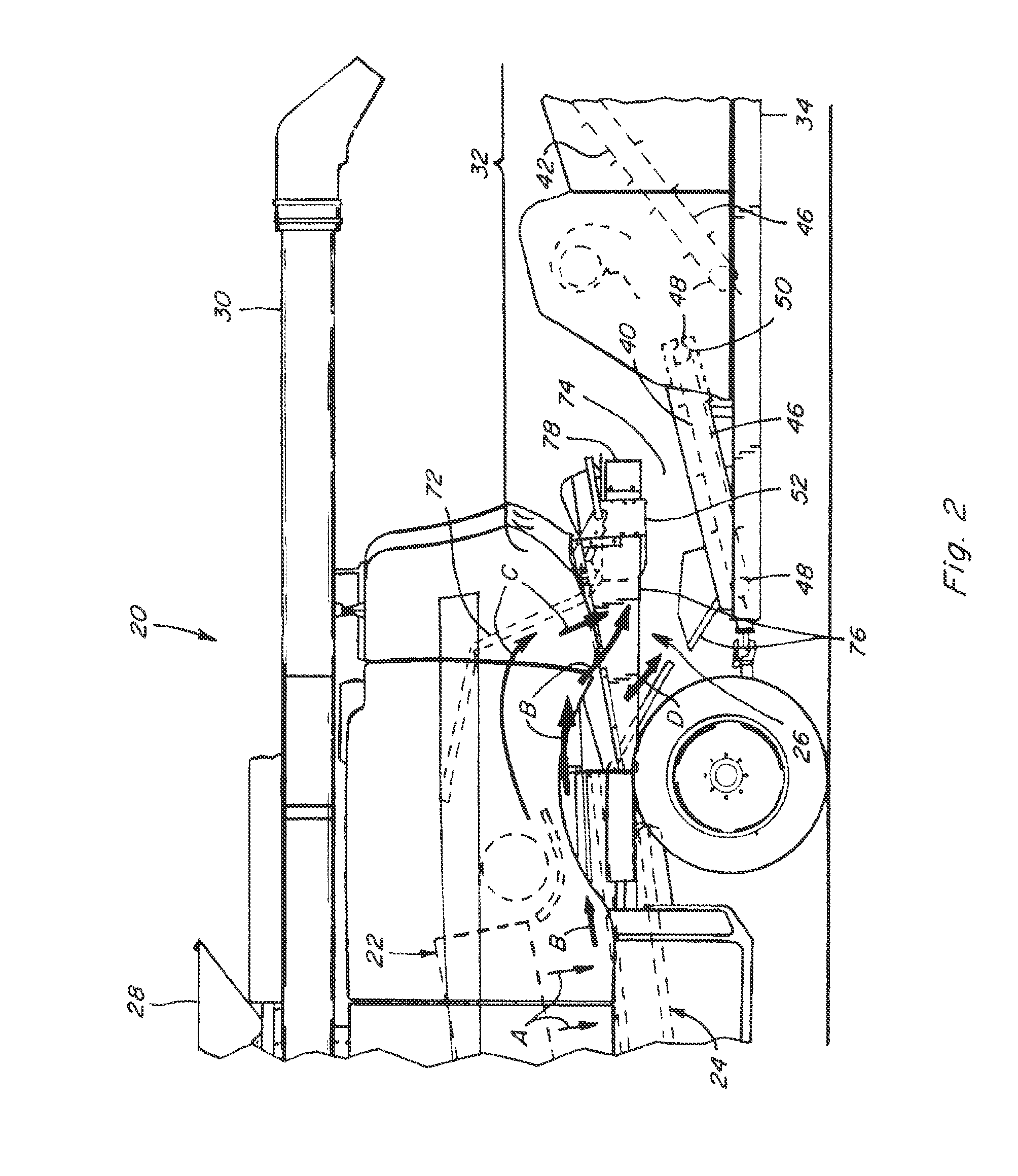Corn cob conveying and cleaning system using induction and air flow from a harvester for separating and spreading light crop residue
a technology of conveying system and corn cob, which is applied in the direction of mowers, agricultural tools and machines, etc., can solve the problems of insufficient utilization of available air flow discharged from the cleaning, reduced soil nutrient content of cob collection, and large volume of air flow, so as to facilitate the separation of lighter elements and increase the mass
- Summary
- Abstract
- Description
- Claims
- Application Information
AI Technical Summary
Benefits of technology
Problems solved by technology
Method used
Image
Examples
Embodiment Construction
[0030]Referring now the drawings, in FIGS. 1 and 2, a representative agricultural harvesting machine 20 is shown, which is a combine constructed and operable in the well known manner for harvesting whole ears of corn from corn plants as the combine travels over a field. Combine 20 includes well known apparatus that gathers and conveys the ears of corn into a threshing system 22 within the combine which removes most of the husk surrounding the ears, and the corn kernels from cobs of the ears, and directs a flow of the corn, some of the cobs and fragments thereof, and other residue or stover lighter than the corn and cobs, such as fragments of husks, leaves, dust, and the like, all as generally denoted by arrows A, within a rear chamber of combine 20 to a cleaning system 24 of the combine. At the same time, cleaning system 24 has a fan that generates an upward and rearward flow of air, denoted by arrows B, utilized to separate and carry away in an airborne manner the lighter elements ...
PUM
 Login to View More
Login to View More Abstract
Description
Claims
Application Information
 Login to View More
Login to View More - R&D
- Intellectual Property
- Life Sciences
- Materials
- Tech Scout
- Unparalleled Data Quality
- Higher Quality Content
- 60% Fewer Hallucinations
Browse by: Latest US Patents, China's latest patents, Technical Efficacy Thesaurus, Application Domain, Technology Topic, Popular Technical Reports.
© 2025 PatSnap. All rights reserved.Legal|Privacy policy|Modern Slavery Act Transparency Statement|Sitemap|About US| Contact US: help@patsnap.com



